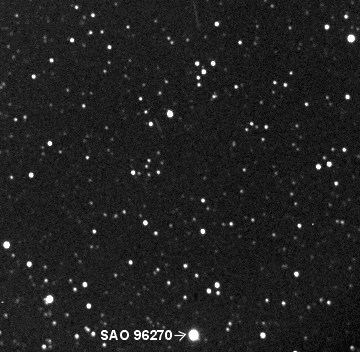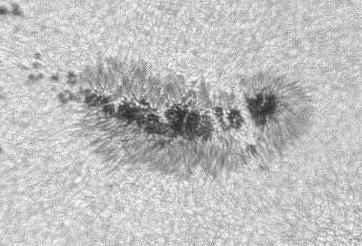SATELLITE FLYBYS APP: Turn your iPhone or iPod into a field-tested satellite tracker! Spaceweather.com presents the Satellite Flybys app. | | | 2010 AL30 UPDATE: An orbital analysis by Michael Khan of the European Space Agency suggests that 2010 AL30 could be the Fregat upper stage of the Soyuz launch vehicle that launched the Venus Express probe in Nov. 2005: full story. ASTEROID FLYBY: Is it an asteroid or a derelict spacecraft? Mystery object 2010 AL30 is flew past Earth last night only 1/3rd the distance to the Moon, and telescopes around the world were watching. In Colombia, amateur astronomer Alberto Quijano Vodniza used a 14-inch Meade LX200 to record the close approach: 
"2010 AL30 is the faint streak moving among the stars," says Vodniza. "The full-length animation reveals a second much brighter object. That's a satellite that happened to be passing by at the same time." Space is a busy place, it seems. Discovered barely three days ago, 2010 AL30 is catalogued as a 10m-class asteroid. Curiously, however, its elliptical orbit has a period of almost exactly one year, the same as Earth. This raises the possibility that it might be a piece of some spacecraft from our own planet. NASA's Goldstone radar in the Mojave desert was scheduled to ping 2010 AL30 between 2:20 and 4:40 UTC on Jan. 13th. The echoes should reveal the nature of this interesting passerby. WIDE SUNSPOT: Sunspot 1040 has grown so large (ten times wider than Earth) that only a fraction of it fits on the page. Click on the image for the big picture: 
Dennis Simmons sends the image from Brisbane, Australia, where a short spell of exceptionally steady air this morning allowed him to capture the sunspot with superb clarity. "After the software had processed my data, I was left gasping, astonished by what the seeing had allowed me to witness. This is far and away my best-ever high-resolution image of a sunspot." This sunspot is a fantastic target for backyard solar telescopes. If you have one, take a look! more images: from Francois Rouviere of Mougins, Alpes Maritimes, France; from Paul Haese of Blackwood, South Australia; from Pavol Rapavy of Observatory Rimavska Sobota, Slovakia; from Paul Maxson of Surprise, Arizona; from M. Jennings, K. Ritchie, J. Stetson of South Portland, Maine
January Northern Lights Gallery
[previous Januarys: 2009, 2008, 2007, 2005, 2004, 2001] | 
